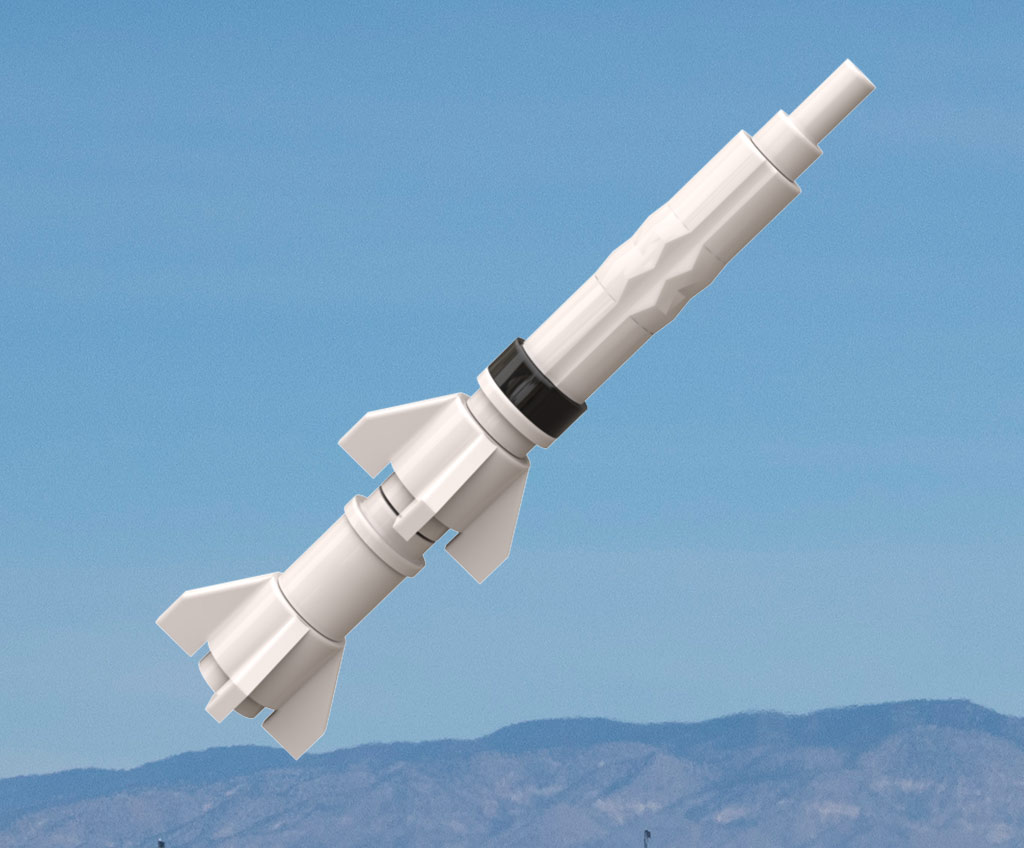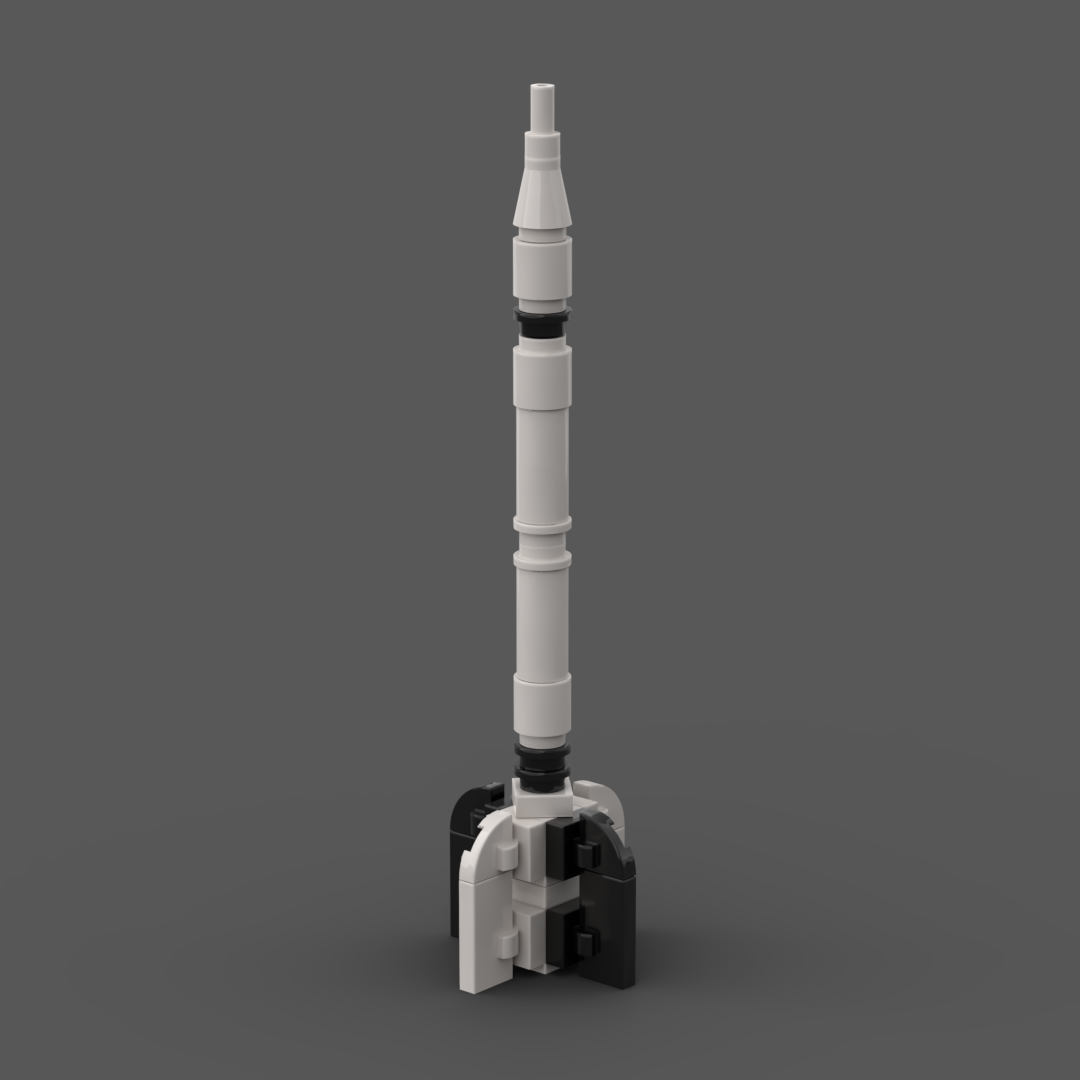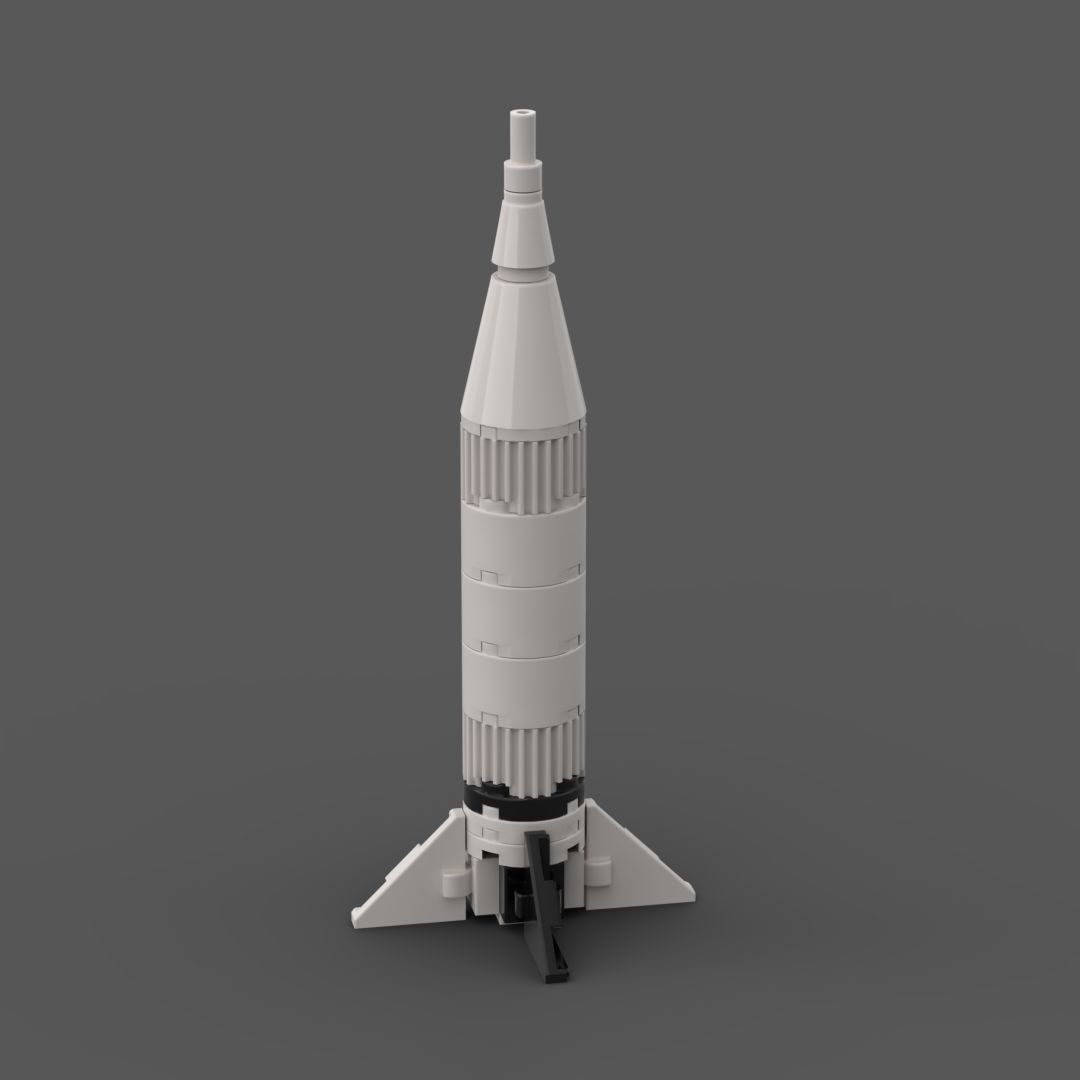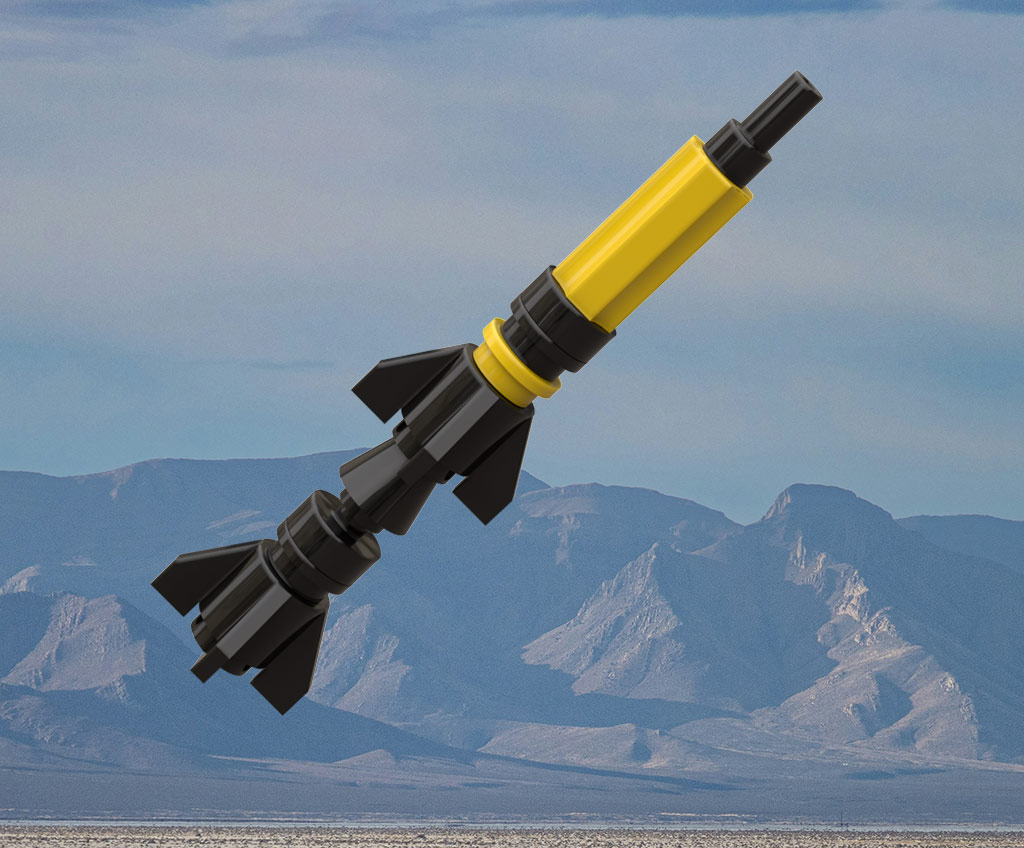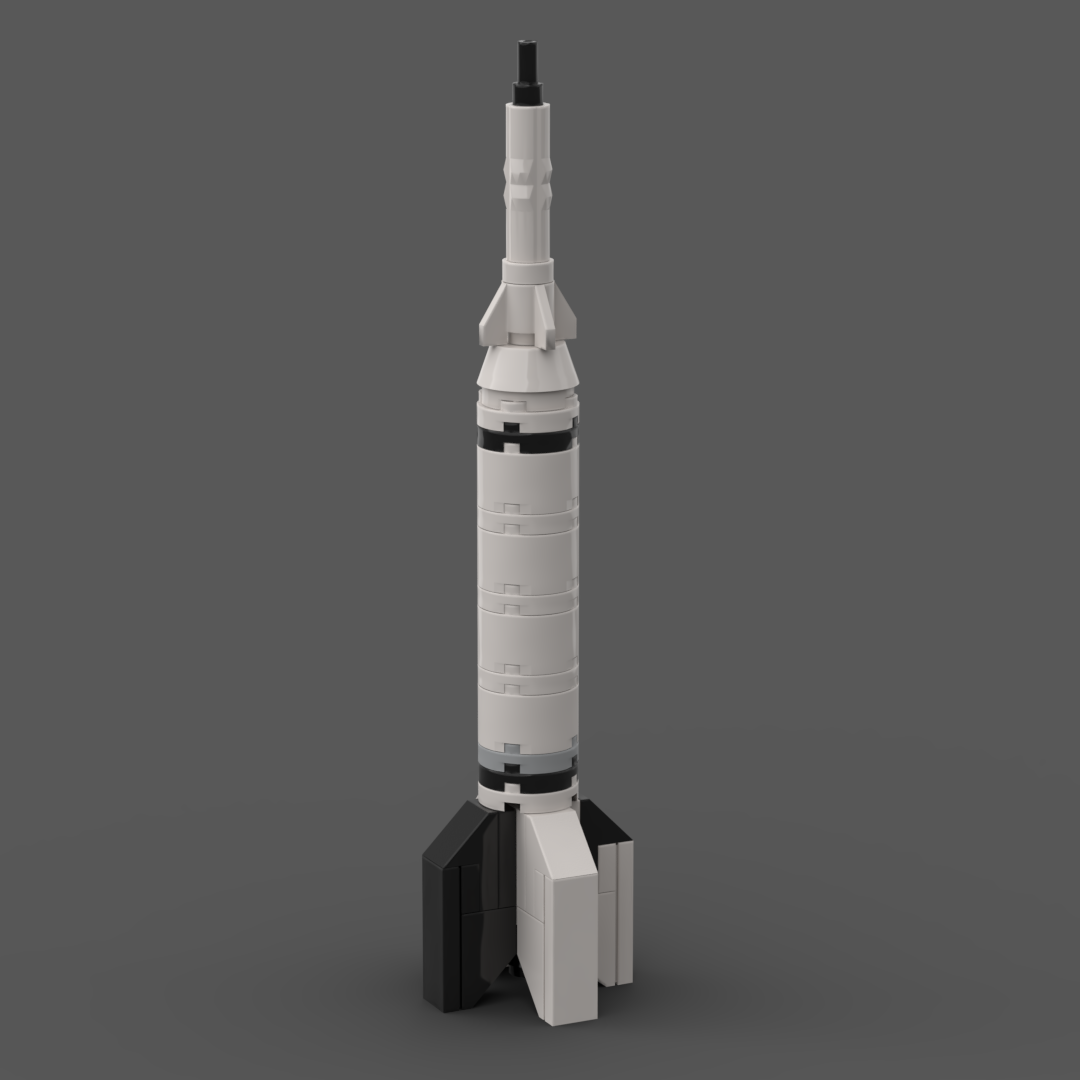
LEGO Designer:
Dan Fallon (phreaddee)
Designed:
July 2020
Categories:
All, Suborbital and Sounding Rockets
Launch Vehicle Details
Stages:
Length:
Diameter:
Mass at Launch:
Low Earth Orbit Capacity:
Total Thrust:
Apogee:
Class:
Bumper was a sounding rocket built by the United States. A combination of the German V-2 rocket and the WAC Corporal sounding rocket, it was used to study problems pertaining to two-stage high-speed rockets. The Bumper program launched eight rockets between May 13, 1948, to July 29, 1950. The first six flights were conducted at the White Sands Missile Range; the seventh launch, Bumper 8 on July 24, 1950, was the first rocket launched from Cape Canaveral.
Bumper employed the V-2 as first stage and the WAC Corporal as second stage. In a typical flight, the V-2 engine would fire first, taking the Bumper combination to an altitude of 20 mi (32 km), at which point the WAC Corporal would be released under its own power. This separation occurred before V-2 engine cutoff to ensure that the WAC Corporal had a stable, actively controlled platform to lift off from, and also so that the V-2 would impart close to maximum possible speed to the Bumper’s second stage.
Bumper 5, fired on February 24, 1949, was the first Bumper to be fired with a fully tanked second stage which allowed 45 seconds burning time. This flight was successful in every phase. Thirty seconds after take-off the V-2 had attained a speed of 3,600 miles per hour and the V-2 and the WAC Corporal separated. The WAC, with its power added to that of the V-2, attained a speed of 5,150 miles per hour and an altitude of approximately 250 miles. This was the greatest velocity and the highest altitude ever reached by a man-made object. The nose cone was instrumented to measure temperatures at extreme altitudes. In addition, the WAC carried telemetry which transmitted to ground stations technical data pertaining to conditions encountered during flight. This was the first time radio equipment had ever operated at such extreme altitudes. Although the missile had been tracked by radar for most of its flight, more than a year passed before the smashed body section was located.
Bumper B-8
Bumper No. 8 was the first missile launch from Cape Canaveral, launched on 24 July 1950 from Launch Complex 3 at a very low angle of attack. The first-stage V-2 climbed 16 km before it exploded. The second-stage WAC Corporal separated successfully, however, and traveled another 24 km.
Bumper B-7
Bumper No. 7 was the second missile launch from Cape Canaveral. This was to be a maximum range test of a two-stage vehicle, to study the problems in staging. The launch was delayed because of moisture in the vehicle. But when finally launched, the WAC achieved the highest sustained speed in the atmosphere to that date (Mach 9/2500 m/s) and 35.2 km altitude before impacting 305 km downrange.
The V2 stage used in this model is a modified version of the A4/V2 model by Mark Balderrama, Martin Sira and Wolf Broszies. I highly recommend checking out their fine work too.
Part count: 137 bricks, 37 lots.
| Unit | width | length | height |
|---|---|---|---|
| Studs | 16.0 | 16.0 | 21.8 |
| Inches | 5.0 | 5.0 | 6.9 |
| Centimetres | 12.8 | 12.8 | 17.4 |
Nr Vehicle Serial Date LS Subor Suc Payload Remark
1 Bumper BU-1 13.05.1948 WS LC-33 * 2 Bumper BU-2 19.08.1948 WS LC-33 * F prem. Shutdown (13km) 3 Bumper BU-3 30.09.1948 WS LC-33 * F WAC failure 4 Bumper BU-4 01.11.1948 WS LC-33 * F Tail expl. T-18.5 sec 5 Bumper BU-5 24.02.1949 WS LC-33 * 6 Bumper BU-6 22.04.1949 WS LC-33 * F prem. Shutdown T+47.5 sec 7 Bumper BU-8 24.07.1950 CC LC-3 * F WAC failure 8 Bumper BU-7 29.07.1950 CC LC-3 * Launch sites: CC = Cape Canaveral Air Force Station, Eastern Test Range, Cape Canaveral, Florida, USA WS = White Sands Missile Range, New Mexico, USA
Launch History information from space.skyrocket.de
Launch History information from space.skyrocket.de



